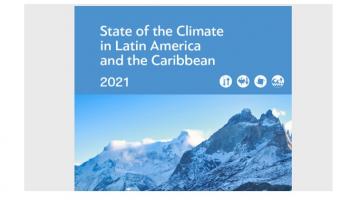Extreme weather and climate change impacts including mega-drought, extreme rainfall, land and marine heatwaves and glacier melt are affecting the Latin America and the Caribbean region, from the Amazon to the Andes and from Pacific and Atlantic Ocean waters to the snowy depths of Patagonia.
The World Meteorological Organization (WMO) State of the Climate in Latin America and the Caribbean 2021 highlighted the far-reaching repercussions for ecosystems, food and water security, human health and poverty.
“The report shows that hydrometeorological hazards, including droughts, heatwaves, cold waves, tropical cyclones and floods, have unfortunately led to the loss of hundreds of lives, severe damages to crop production and infrastructure and human displacement” said WMO Secretary-General Prof. Petteri Taalas.
“Increasing sea-level rise and ocean warming are expected to continue to affect coastal livelihoods, tourism, health, food, energy, and water security, particularly in small islands and Central American countries. For many Andean cities, melting glaciers represent the loss of a significant source of freshwater currently used for domestic use, irrigation, and hydroelectric power. In South America, the continued degradation of the Amazon rain forest is still being highlighted as a major concern for the region but also for global climate, considering the role of the forest in the carbon cycle,” said Prof. Taalas.
Key findings:
- The average rate temperature increase was around 0.2°C/decade between 1991 and 2021, compared to 0.1°C/decade between 1961 and 1990
- Sea levels in the region continued to rise at a faster rate than globally, notably along the Atlantic coast of South America south of the equator (3.52 ± 0.0 mm per year, from 1993 to 2021), and the subtropical North Atlantic and the Gulf of Mexico (3.48 ± 0.1 mm per year, from 1993 to 1991)
- Deforestation in the Brazilian Amazon rainforest doubled compared to the 2009‑2018 average, reaching its highest level since 2009. 22% more forest area was lost in 2021 compared to 2020
Access the report HERE
